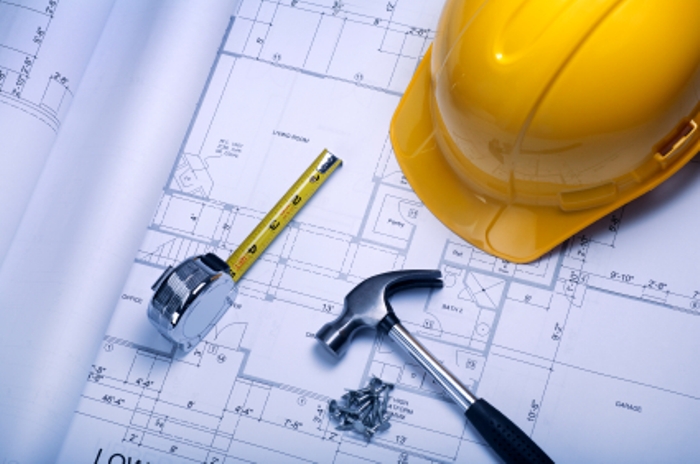The construction industry forms the backbone of modern urban development. From towering skyscrapers to intricate infrastructure, it plays a pivotal role in shaping our environment. Yet, with the vast magnitude of operations, the inherent risks associated with construction jobs are equally significant. Therefore, safety must be the industry’s top priority. This article emphasizes the critical importance of proper training and judicious hiring in ensuring the well-being of every individual on a construction site.
The Current State of Safety in the Construction Industry
Every year, reports flood the news cycles highlighting injury rates, fatalities, and the common causes behind these incidents in the construction sector. Many of these accidents are not just random happenstances but result from inadequate safety measures, lack of training, or sometimes, a combination of both. For instance, a scaffolding mishap due to a worker’s unfamiliarity with setup procedures or a trench collapse resulting from a lack of safety oversight can have devastating consequences. These cases underscore the need for heightened safety awareness and measures.
The Integral Role of Proper Training
Training is the foundation upon which a safe construction site is built. Beginning with the basics, every worker must be well-versed in standard safety protocols, from wearing helmets and harnesses to understanding evacuation procedures. This ensures a minimum safeguard against common hazards.
But basic training isn’t enough. The construction sector is vast and diverse, with every project presenting its unique set of challenges. Workers may need to handle specialized equipment or work under extreme conditions, such as great heights or confined spaces. It’s imperative they receive advanced training tailored to these specific scenarios to manage high-risk situations safely.
Continuous training sessions and refresher courses also play a vital role. Over time, safety protocols might evolve, or workers might become complacent. Regular training ensures they’re always updated on the latest safety standards and remain vigilant.
A well-trained crew not only reduces accident rates but also improves overall site efficiency. With everyone knowledgeable about their roles and the associated risks, operations proceed seamlessly, and the likelihood of interruptions due to accidents diminishes.
The Significance of Thorough Hiring Practices
It’s a common misconception that in the rush to meet project deadlines, hiring can be fast-tracked, especially if a construction recruitment agency is involved. However, cutting corners in recruitment can lead to dire repercussions. Hiring untrained or ill-fit personnel not only jeopardizes the individual’s safety but also poses risks to the entire crew.
Every potential hire should undergo thorough background checks, and their credentials must be verified. It’s essential to ensure that candidates possess the necessary skills and experience for the role. But beyond technical capabilities, their aptitude and attitude towards safety are equally crucial. A construction recruitment agency can play a pivotal role here, ensuring that candidates not only fit the job description but also align with the company’s safety culture.
Safety assessments should be an integral part of the recruitment process. These assessments can range from practical tests, evaluating a candidate’s ability to follow safety procedures, to psychological evaluations, determining their risk-taking tendencies.
Integrating Safety Culture from Day One
From the moment a new hire steps onto a construction site, safety must be at the forefront of their initiation. An effective onboarding process emphasizes safety orientations, ensuring that new workers are familiar with the specific protocols and equipment of that particular site. It’s not merely about informing them of the rules but instilling in them a sense of responsibility towards their safety and the safety of their colleagues.
Promoting a safety-conscious culture where workers look out for each other can dramatically reduce potential hazards. Simple acts like reminding a colleague to wear their safety gear or double-checking equipment setups can be lifesaving. Management plays a crucial role in this. Supervisors and team leads should set safety precedents, leading by example. Their commitment to safety will inspire the crew to follow suit.
Encouraging open communication is another cornerstone of a robust safety culture. Workers should feel confident in reporting potential hazards or unsafe behaviors without fearing repercussions. An environment where safety concerns are addressed promptly and effectively minimizes risks and fosters trust within the team.
The Long-term Benefits of Safety Investments
Investing in training and meticulous hiring might seem like an added expenditure initially, but the long-term benefits far outweigh the costs.
From a financial perspective, the implications of accidents – medical bills, legal issues, compensation, and operational downtime – can be staggering. Ensuring safety through proper training and hiring reduces these potential costs significantly. Furthermore, repeated incidents can increase insurance premiums, adding to operational costs in the long run.
A company’s reputation is invaluable. Consistent safety mishaps can tarnish a firm’s image, making it harder to secure contracts or attract top talent. On the other hand, a company known for its stringent safety standards and low accident rates builds trust with clients, stakeholders, and potential employees.
Employee morale is another crucial factor. Workers who feel valued and protected are more likely to stay with the company, reducing turnover rates and associated recruitment costs. Their commitment to the firm and their role increases, leading to higher productivity and efficiency.
Lastly, business growth is closely tied to a company’s safety record. A stellar safety reputation can open doors to more significant contracts, collaborations, and expansion opportunities. It’s a testament to the company’s dedication to not just delivering quality work but also ensuring the well-being of its employees.
Conclusion
The construction industry, with its inherent risks, demands an unwavering commitment to safety. Through comprehensive training programs and rigorous hiring practices, companies can create a safe working environment that benefits not just the workers but the organization as a whole. As the industry evolves, the focus on safety should remain constant. With the help of partners like a construction recruitment agency, firms can ensure they’re always staffed with individuals who prioritize safety. Looking ahead, the vision is clear: a construction industry where every worker returns home safely, every day.

